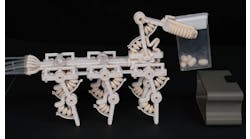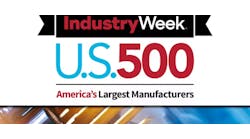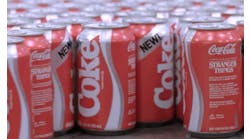High priority. Less-than-stellar execution.
For many manufacturers those two concepts aptly describe their companies' new product development and launch processes. Indeed, while often called the "lifeblood" of manufacturing, new product introductions too often fall flat. According to a 2007 report by ARC Advisory Group, companies meet their product launch dates only 45% of the time, on average. Another study, this one by Booz Allen Hamilton, indicates that throwing money at the challenge of research and development doesn't necessarily translate to improved company performances.
It doesn't have to be. ARC analyst Ralph Rio identifies several best practices that may help manufacturers improve their new product development process. These include making a senior person responsible for the product introduction process -- and not just any senior person. The selected person must have the respect and knowledge of the organization to successfully work with departmental leaders. He also suggests a value-stream mapping exercise, but for product development rather than manufacturing operations. This effort will help organizations visualize and then eliminate the waste in their product development process.
| Avoiding Failure To Launch |
Rigor, Discipline and Innovation
A rigorous and disciplined approach to product development guides Eaton Corp.'s aerospace operations, which designs and manufactures hydraulic power generation and fluid conveyance systems. Central to that approach is the Eaton value cycle process, by which all projects are measured. The Eaton value cycle process identifies market trends, the long- and short-term needs of customers, and all other variables that help define the marketplace, including value to shareholders, explains Eric Alden, director of strategic planning and new business development for Eaton's aerospace operations in Irvine, Calif. It's a precursor to any innovation and imperative to helping Eaton meet aggressive growth goals.
Eaton employs a staged-gate approach to product development, not unlike what other manufacturers do. Less typical, however, may be the steps leading up to Eaton's stage-gate development process.
Eaton uses "innovation summits" and "design bursts" to propel the product development process. Innovation summits are two- or three-day events that involve representatives from multiple levels, possibly the chief technology officer and representatives from program management, engineering, sales and marketing, customers and even competitors. Why competitors? "In our industry, we're constantly looking for alliances and joint ventures," Alden says. "Aerospace is not a cheap endeavor."
Day one of an innovation summit includes multiple outside speakers to help generate ideas. "Then we lock ourselves in a room for two days and see what percolates up based on what we heard the first day," Alden explains. Always framing the discussion is how well the ideas align with Eaton's value cycle analysis.
The hoped-for end result of a summit is three to five technologies with which to proceed to the next step. Generally the result includes a "fairly simplistic" evaluation of the technology, as well as estimates about what the market and revenues may be. Those are reported to senior management, who decide which ideas will proceed on to the next step, which is a design burst.
Design bursts are "deeper dives" into the ideas generated in the innovation summits. Like the innovation summits, design bursts generally are two to three days long. Participants flesh out ideas in a more robust way than in a summit, explains Alden. While the innovation summits are about ideas and creativity, design bursts are engineering-focused. The end result of design bursts are more concrete ideas about appearance, the investments associated with ideas, as well as the potential payback. Like innovation summits, design bursts conclude with report-outs to senior management.
Alden says a key takeaway from Eaton Aerospace's approach to product development is a simple one: Look for innovation across the corporation. "The best thing we've done in the past five years is to involve [Eaton] auto and truck in our innovation summits. You wouldn't think our commercial [business units] would have much impact on us, but they've been a big part of the process from the value cycle down."
Voice of the Customer
Borrowing a page from lean manufacturing pioneer Toyota, Nexen Group Inc., Vadnais Heights, Minn., has embraced its version of the Toyota Product Development System to improve its new product development efforts. The results are a rebirth at Nexen, says David Hein, vice president of engineering at this maker of brakes, clutches and other motion control systems. From a company with a mature product line and eroding margins, Nexen now is a growing concern. Development project costs are down, learning is fostered and product value to the customers is on the upswing, Hein reports.
How does its process work? Nexen adopted "set-based design" in 2006. With set-based design, companies initially configure multiple ideas or concepts. Nexen deployed it as 4-2-1, meaning four solid models initially are created, winnowed down to two prototypes and then to one final unit. Designs are selected to move forward in the product development process based on how well they stack up against a value distribution chart created for the project. Additionally, the information and the knowledge of the chosen projects are captured and retained for use on other projects.
Integral to Nexen's approach is the relationship between the engineer and the customers. Once upon a time engineers were four to five steps removed from the customer, says Hein. Now they are on the front lines, making customer visits in Nexen's efforts to gauge customers' wants and needs. At Nexen, each product development project requires a minimum of 10 customer visits. The engineering vice president says he prefers a "Noah's Ark" approach to those visits, sending engineers out in teams of two for, preferably, onsite visits with the person making the buying decision.
At those meetings, Nexen asks customers to accept or reject preconceived value propositions advanced by the firm. Based on customers' feedback, the manufacturer constructs a value distribution, which is a visual tool that translates "customer care abouts" to design priorities. These value distributions are integral to design reviews.
The benefits of this design development process? Among others, it reduces or eliminates design loopbacks related to project "scope creep," or uncontrolled changes in a project's scope. In general, scope creep has been addressed by one of the multiple designs, Hein explains. The reduction of design loopbacks may also reduce the number of prototypes that sometimes result in other development processes.
Partnering for Progress
"Quite frankly, I don't care where an idea comes from. If we do it all internally, that's great. If we do it all externally, that's great too. The whole idea is we want to be able to offer the types of products our customers need worldwide, and we certainly don't have a 'not invented here' syndrome. I think we've gotten way past that."
-- Craig Messerknecht, vice president, marketing and global product development, D-M-E Co.
The partnership works, in part, because of the win-win situation it creates for both firms. For example, one partnering opportunity with Polimold recently led to a new product that was not only an improvement, but which also had a better cost structure due to some of the manufacturing being done in Brazil. Because of certain manufacturing capabilities at the Brazil firm, the product also launched more quickly than it otherwise might have. "Faster to market is very important to us," Messerknecht says.
Like D-M-E, Polimold benefits from the knowledge-sharing that occurs when the manufacturers' engineers work together. Additionally, says the vice president, D-M-E's global network gives Polimold products a wider audience.
D-M-E also is looking to enhance its product development pipeline with yet another strategy that takes the manufacturer outside of its own four walls. In the past (and still today), small customers, inventors or entrepreneurs have approached D-M-E with ideas for new products or improvements to existing products, Messerknecht says. Where it makes sense, the company has purchased the rights to an idea or made other financial arrangements to obtain access. In fact, it happens fairly frequently, he says -- and with good enough results that D-M-E is pursuing this route to product development more proactively than it has in the past.
"Our new product ideas come from a number of areas," Messerknecht says. "Quite frankly, I don't care where an idea comes from. If we do it all internally, that's great. If we do it all externally, that's great too. The whole idea is we want to be able to offer the types of products our customers need worldwide, and we certainly don't have a 'not invented here' syndrome. I think we've gotten way past that."



